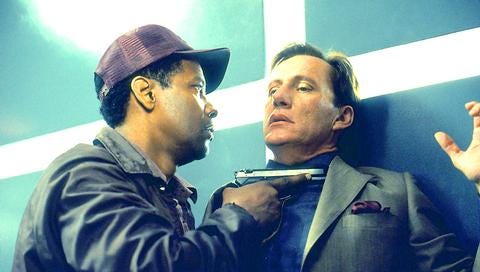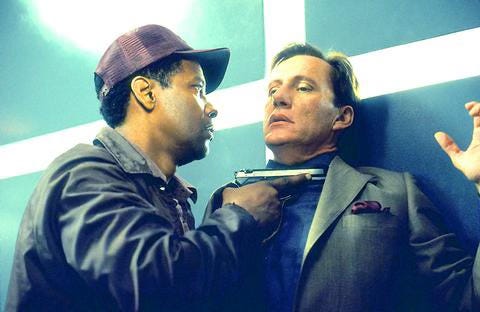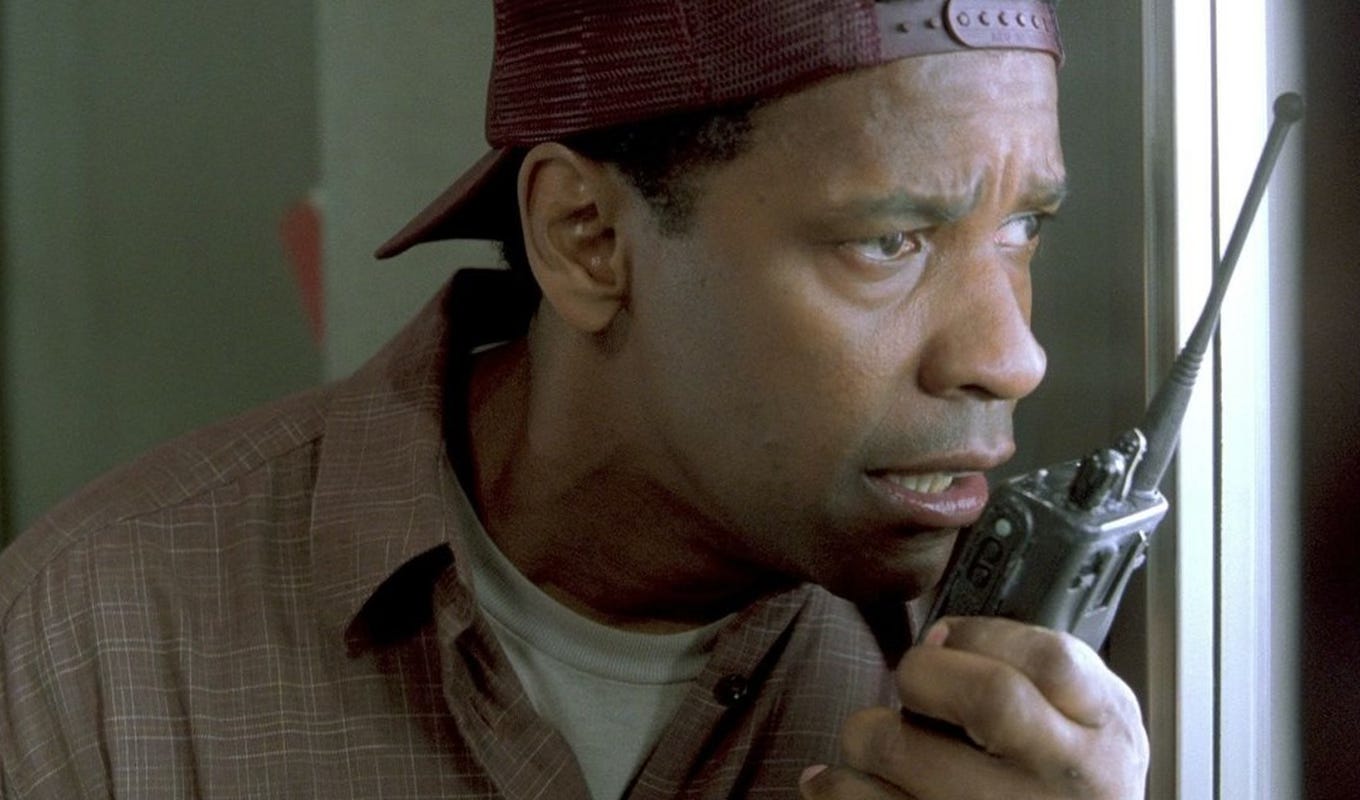revisiting John Q: rage, self-silencing, and coping with chronic illness.
when catching a case isn't an option.
Two months ago, I jolted out of a deep slumber. Two things were off: my dog Baldwin was licking my face and my legs were completely numb. I called my friend Chris to take me to the hospital. After hanging up, I army crawled my way to the front door of my apartment with Baldwin attached to me on a crossbody leash. I grasped the handle and used my remaining strength to pull the door open. Chris peeled me off the ground and rushed me to the UCLA emergency room in Westwood, Los Angeles.
Shortly after arriving, I was wheeled to a tent outside in the cold because I had a service dog with me. I was told the wait time would be 3 hours. Anthony, the only emergency room attendant who treated me like a human, was kind enough to provide several blankets and warm compresses. As I looked around the tent I noticed there were mostly people of color. Some were homeless and crying out for help. The others were waiting for updates about their loved ones. Chris grew restless, he had work in the morning and wanted to leave. After about an hour, I asked him to take me home. The temperature was dropping and I was losing sensation in my feet again.
The next day, I regained some feeling in my legs but I was still having trouble walking. I went to a scheduled appointment with my rheumatologist at UCLA in downtown LA and was refused because I did not have an accepted insurance plan. Internally, my head was spinning and I wanted to scream. But externally, I muttered an “Ok” and had a seat until my ride showed up.
In January, UCLA gladly accepted my money as a self-pay patient and during my following six appointments. At the date of the refusal, I had paid UCLA approximately $3,942.58 in out of pocket expenses because they stopped accepting Medicaid patients (despite being a state funded hospital) sometime in the last year.
The whole experience brought the 2002 film John Q starring Denzel Washington to mind. Washington’s character, John Quincy Archibald, a factory worker in Chicago, faces financial and emotional turmoil when his son requires a heart transplant after collapsing at a Little League baseball game. Late pass: I saw John Q for the first time a few weeks ago, but it is a go-to meme among my friends who have faced obstacles navigating our country’s healthcare system.
In John Q’s case, after his HMO plan denies him coverage, he needs to come up with $250,000 for a new heart, which is the only medical intervention that will keep his child alive. After selling his car, furniture, and fundraising in his community, Q and his wife still come up short and the hospital refuses to put his son on the donor’s list. Frustrated, Q arrives at the hospital with a gun and holds the heart surgeon and the rest of the patients and staff hostage.
While I didn’t have the gall to brandish a gun and catch a case like Q, I can identify with this level of rage. It’s a rage that the 26 million underinsured Americans likely feel when an unexpected health condition compromises their already tenuous financial stability. Since losing my employer based insurance in May 2023, I’ve had to fight the bleak reality that my ability to work is directly tied to my access to quality health care.
“When people get sick they deserve a little help!
I am not going to bury my son. My son is going to bury me!”
- John Q
Proper health care should be an inexorable human right. But for John Q, the myriad hours he spends in a factory wielding a grinding wheel are worthless when it comes to saving his child’s life. I have a complicated relationship with paid labor. I have worked countless low paying jobs over the years that left me physically drained and barely able to pay for my reoccurring psychiatric medical expenses.
In January, when I started to experience the physical symptoms of Sjorgen’s Syndrome, I began to unravel. I pride myself on not having a short temper, but internally I was enraged. However, I tucked this rage into a neat little compartment in the back of my mind, like I always do, in favor of problem solving. I researched. I asked a million questions. I scoured peer-reviewed studies, patient forums, clinical studies, and Reddit. But while I was trying to find answers to my physical symptoms, that internalized rage grew until it had the firepower of Q’s handgun. Unfortunately, my family and a few friends caught some strays when that metaphorical gun finally fired.
A 2022 study found that this practice of “self-silencing” is commonly seen in women suffering from chronic illnesses such as irritable bowel syndrome, HIV, chronic fatigue syndrome, and cancer. It has also been linked to a higher risk of premature death. 42 years earlier, Harvard psychologist Dana Jack first identified this phenomenon as a “propensity to engage in compulsive caretaking, pleasing the other, and inhibition of self-expression in relationships in an attempt to achieve intimacy and meet relational needs.” Jack saw this was a reoccurring theme for female patients suffering from depression. For women like me, who try to avoid becoming the stereotype of the angry black woman, this silent rage is a faulty coping mechanism we use to get through daily life.
Having an autoimmune disease makes you feel powerless. You’re bombarded not only by the struggles of surviving in our capitalist country, but by your own compromised cells that have turned against you. On most days, you feel like you’re drowning in a crowded public pool while everyone around you sunbathes and enjoys their afternoon.
Since this last autoimmune flare, I have cut ties with friends, family, places, and some material items. These aspects of my life felt like cinderblocks plunging me to the bottom of that pool. I don’t blame them for my illness. But I have the power to create distance from these stressors. I may be disabled, but I am still striving for a quality of life I know I deserve.







This was very impactful.
Thanks for sharing your experience. Do you mind if I share this post?